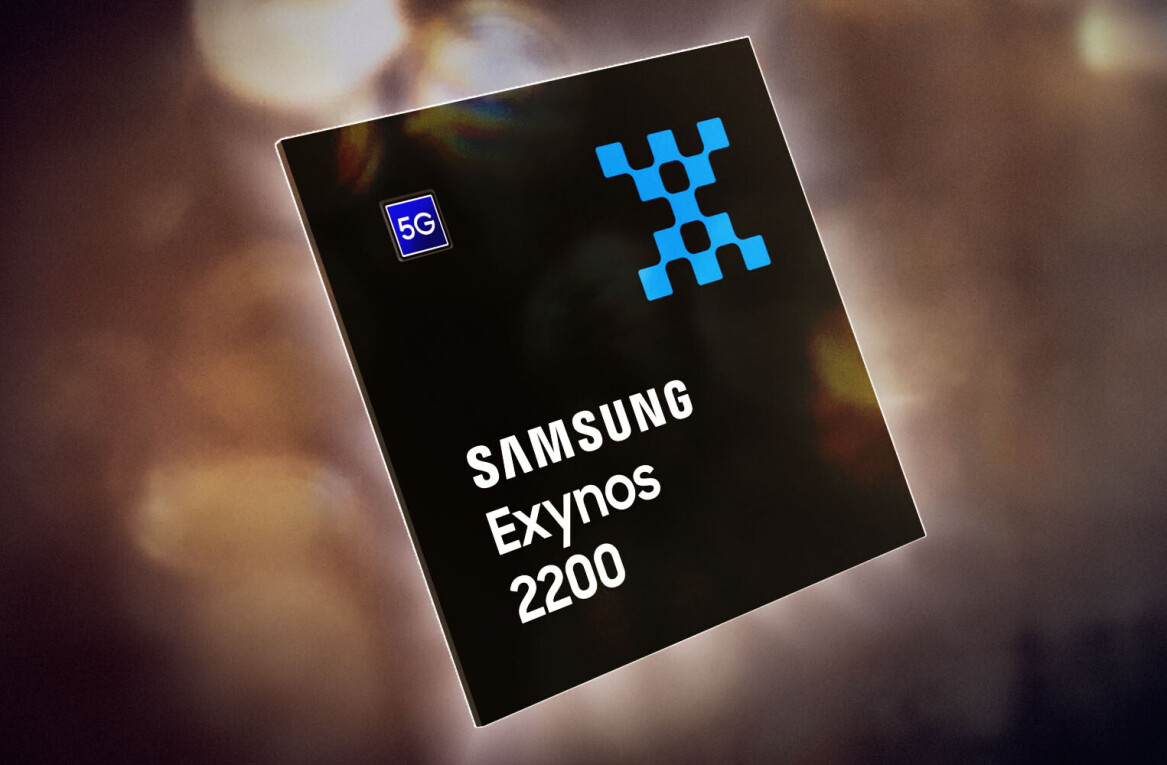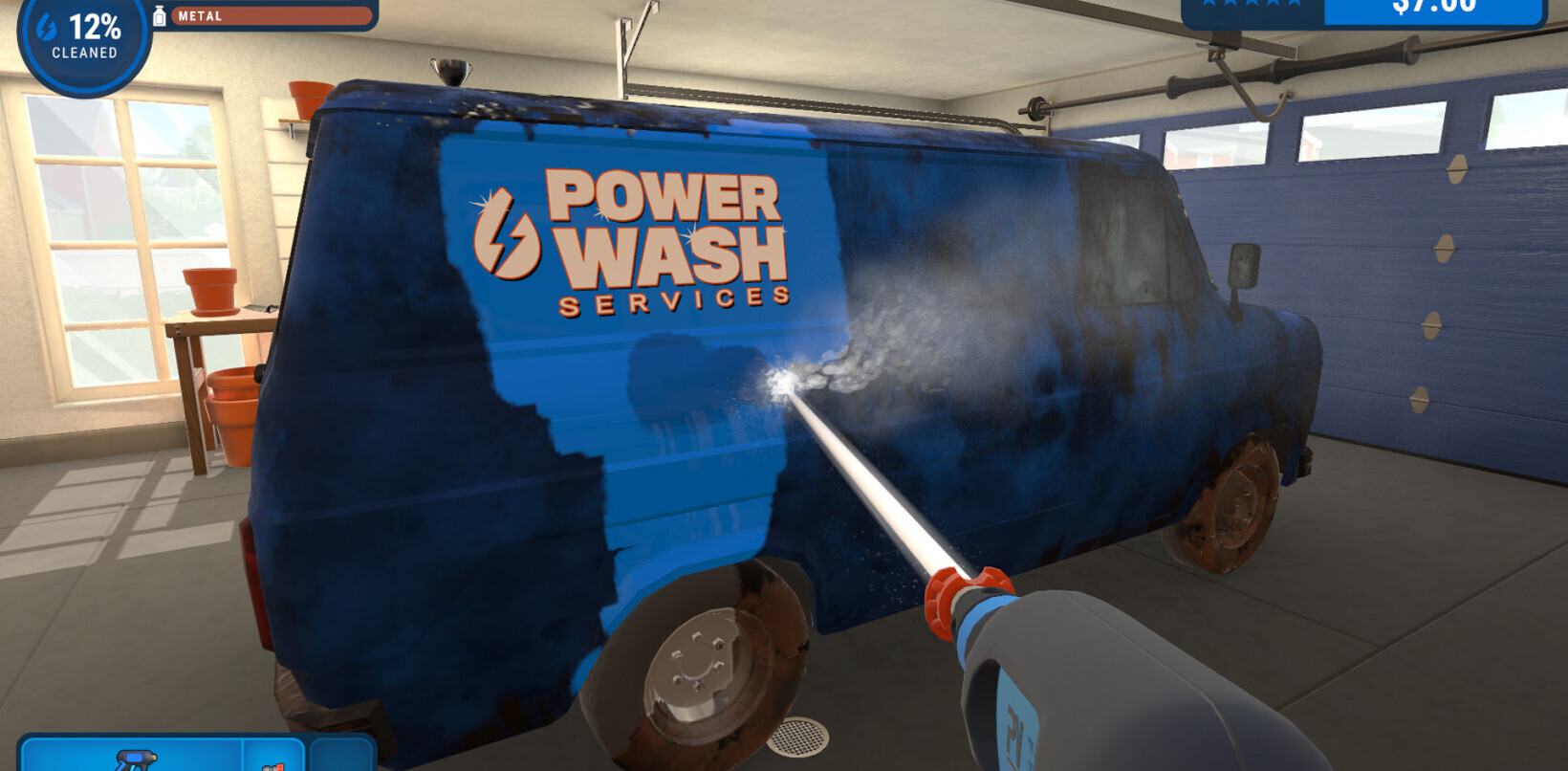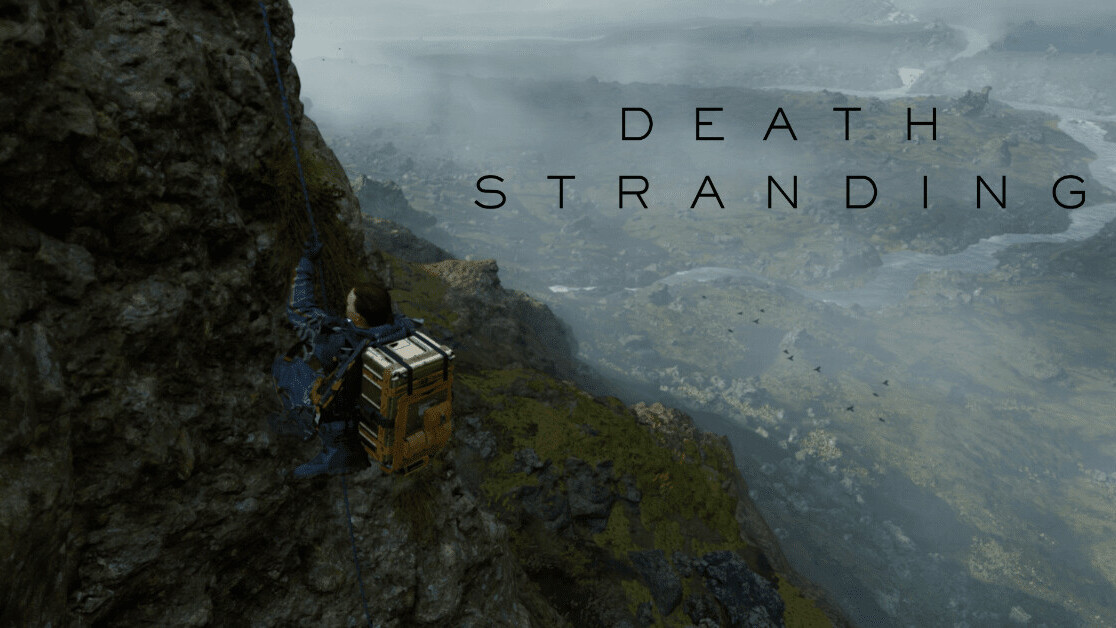
This article was originally published by Super Jump Magazine, an independent publication all about celebrating great video games and their creators through carefully-crafted, in-depth featured produced by a diverse team of games journalists, designers, and enthusiasts.
I have been fortunate enough to play Death Stranding over the last couple of weeks. While only just over halfway through the game, I’ve played more than a sufficient portion to grasp the striking world and experience it offers. It’s polarized critics and gamers for good reason, aiming for places and prodding at ideas that many games could only dream of approaching. Perhaps the only reason Death Stranding could be this ambitious is because Kojima is, well, Kojima.
One of the most remarkable elements of my gameplay experience so far is the noticeable importance and power of the environment and landscape. Unlike many other games where you step into the shoes of an all-powerful protagonist, Sam Porter Bridges is unassuming, unremarkable even. Despite possessing DOOMS — an ability to sense or see BTs (beached things) — you are, in essence, just a delivery man. Indeed, Sam appears to be very aware of his own limitations early on, as he is reluctant to accept and undertake the odyssey he is tasked with.
Shaped by topography
As Sam Porter Bridges, you are entirely beholden to the post-apocalyptic American landscape. Gameplay, or more specifically, your gameplay choices, are informed by the physical landscapes you have to tread across for whatever task you are undertaking. If you are carrying a large amount of cargo, planning the best route you’ll need to take from point A to B is an indispensable strategy to perfect. Some deliveries require you to avoid bodies of water or refrain from damaging cargo beyond certain thresholds. Likewise, at other times you may have to keep cargo containers flat or carry them in your hands to avoid damage. Time limits are also imposed for deliveries with important cargo like medical supplies. Each of these different scenarios shapes the way you can traverse the terrain.
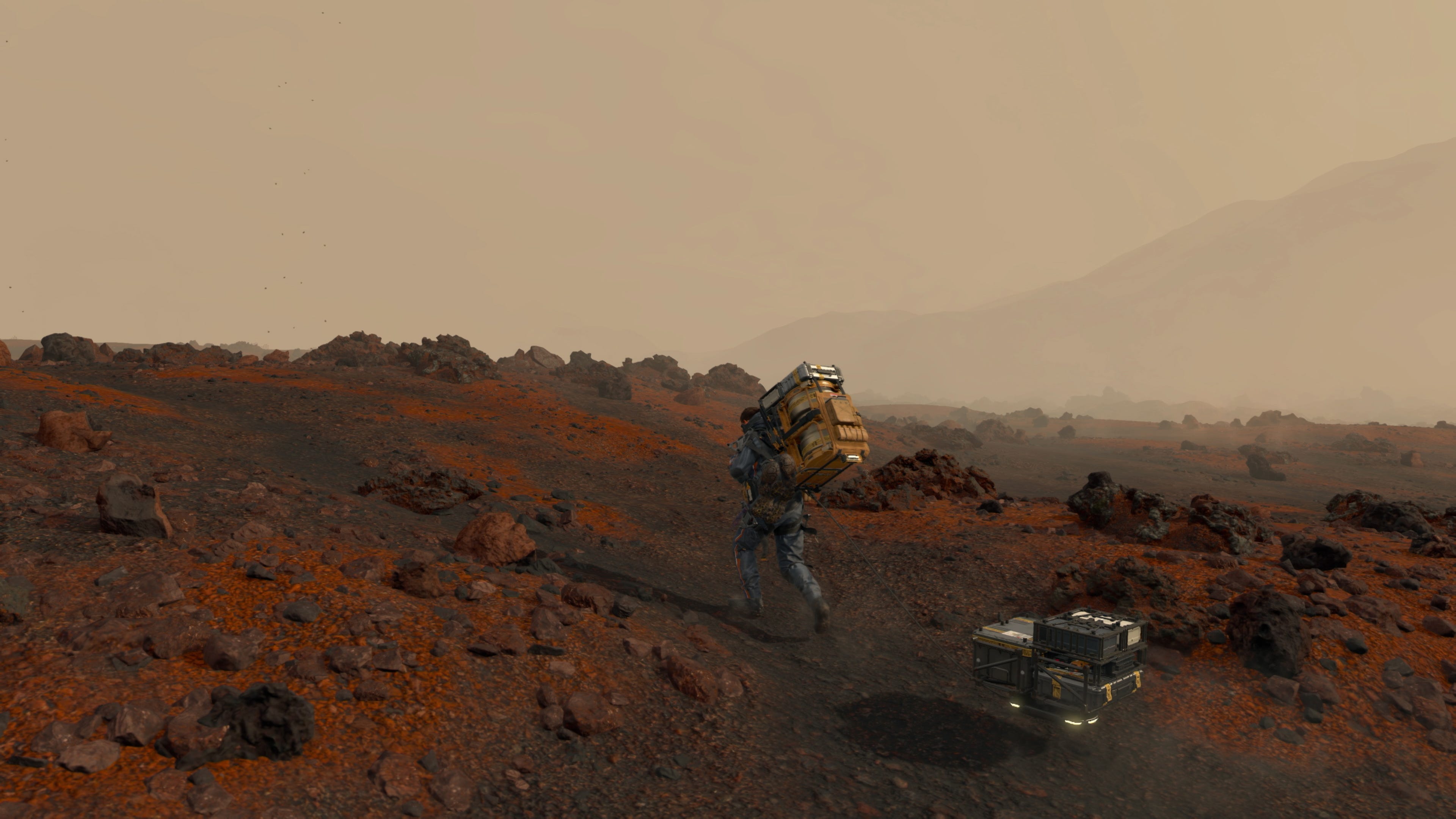
The landscapes you encounter are diverse. Mountains seem to be the most prolific so far, spanning huge swathes of the earth and often cutting you off from your desired location. You also encounter desert areas that are almost Mars-like, providing a valuable change of color from the greys and greens that are dominant early on. Forests can be found in other areas, along with vast plateaus and lakes.
You’ll also come across locales with blocks of stone that are reminiscent of the basalt columns at the Giant’s Causeway near Belfast. There are also some urban/city areas in the game, but surprisingly they feel quite underwhelming compared to the natural biosphere. This is in part due to the fact that much of the population died out during the titular Death Stranding extinction event. As well, the denizens of this new America are unwilling — perhaps unable — to venture outside due to the threat of phenomena like time fall and the BTs.
Physical land is not the only aspect of Death Stranding where the environment informs your gameplay experience. Weather is also incredibly important. Timefall, as indicated above, is a threat to people — but it also ruins cargo. This is because, as the name suggests, it causes time to pass dangerously quickly within the area it manifests.
As you progress deeper into the game, you unlock the ability to build timefall shelters designed specifically to alleviate and avoid extended exposure to the rain. Likewise, there’s also a weather station that you bring online which enables you to see timefall coverage up to 30 minutes in advance in order to plan your route better, or get out of the rain if abruptly caught in a deluge.
If you’re up high trekking over any mountains, timefall can take the form of snow. I found the snow particularly beautiful when playing, and it too impacts your movement, as walking through any snow slows you down considerably (especially considering most of the time you only encounter when climbing steep slopes). In certain areas you’ll also find extreme gale winds that can rob Sam of his stamina and even throw him off his feet, depending on exhaustion and cargo weight.
Equipment, a literal lifesaver
The equipment you fabricate and utilize during your journey across America is also intrinsically linked to the physical environment. Attempting to climb some mountains? You better bring some ladders and climbing anchors. Driving across extensive amounts of rivers and lakes? Make sure to pack a PCC so you can build a generator to recharge any vehicles. Unfortunately many of the more useful structures and equipment don’t get unlocked until much later on in the game, but you never feel unprepared early on. Death Stranding manages to feed you enough elements of gameplay, piece by piece, to make progression feel balanced.
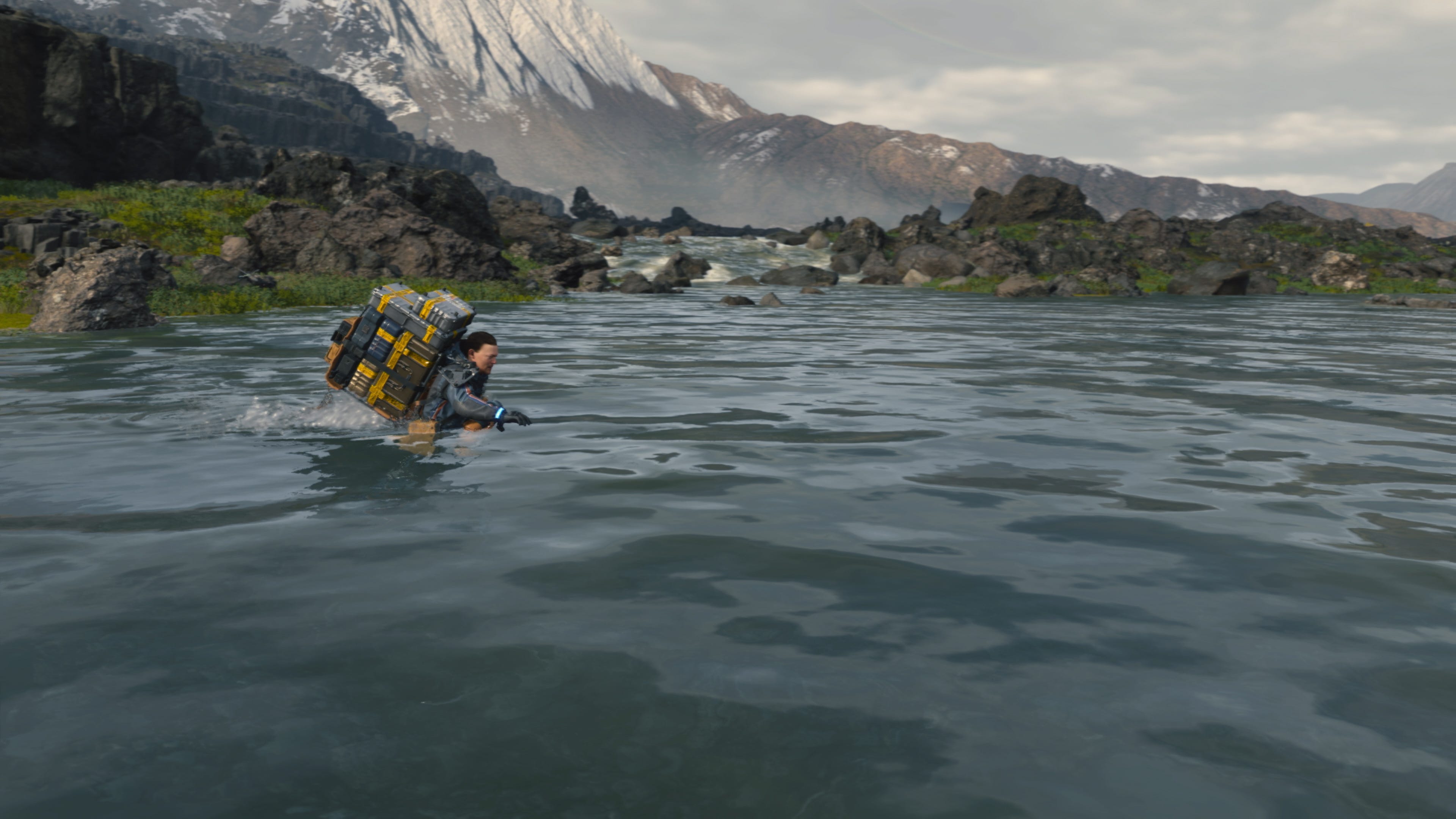
Independent of any natural aspects of the environment, the landscape is also manipulated and changed by the presence of BTs. If casually stray into a BT-ridden area and they detect you, the earth around you will flood with a thick tar-like substance and the BTs will drag you into the center of their territory.
This, in turn, will trigger a boss battle with a much larger and more powerful BT. It’s an incredible contrast to the aspects of the natural world. If you do happen to stumble into the BTs’ clutches and trigger this boss battle, the environment changes even more drastically — decrepit buildings and smashed-up vehicles rise from the tar, providing a dynamic obstacle course and an opportunity for cover, or to reach higher ground while fighting the larger BT baddie.
Interestingly, the entire landscape of America in Death Stranding feels quite un-American. From the opening cutscene onward, I felt as if this barren, deserted country looked more like it came right out of places such as Iceland or Scotland (and at times like the planet Mars as mentioned before). As a side note, and without delving into the story, the significance of the game taking place in America is lost on me — you could replace it with any other country and the central power of the story would remain.
It’s possible that the wider importance and consequence of America as the featured world and landscape becomes clearer later on in the game. Decisions about the setting of a game are never arbitrary, and with Kojima’s renown as a video game auteur, it’s not a hard guess to make that he chose America for a reason. There are concerted design and planning in every aspect of Death Stranding’s environment. It would irrational to choose America as the canvas for such a narrative and reality. I hope these questions about the future vision of America as the United Cities of America (UCA) are answered by the game’s closure.
(Editor’s Note: It’s worth remembering that Hideo Kojima pointed to both Brexit and the election of — and the attendant polarization of communities, especially on the internet — as key driving factors behind Death Stranding. This may explain, at least in part, why he chose America for the setting. As well, America is the largest video game market in the world, so there may be some raw pragmatism in the decision as well).
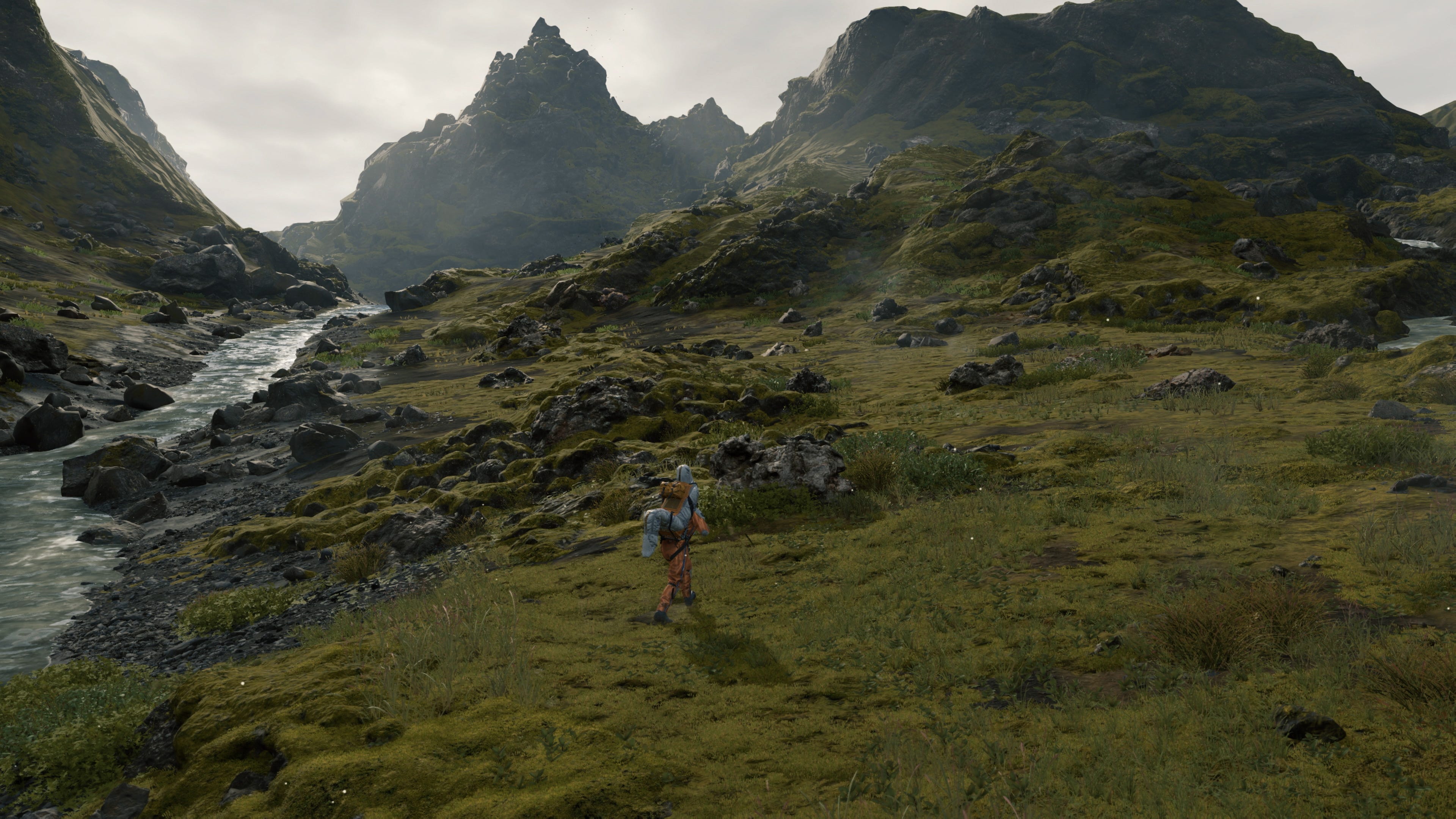
I admit, I’m still yet to place my finger precisely on the pulse of Death Stranding. It’s an enigmatic experience, ebbing and flowing through so many different emotions and moments. The lows of it so far have been pretty low indeed, but the highs have also been surprisingly incredible. I have a sense that the game’s narrative could be compressed a bit and not lose any of its power and strength.
Lulls are easily forgivable though if a game feels like its trajectory is headed toward something unique and exceptional. Death Stranding certainly feels like it is traveling toward a powerful ending, but time will tell if Kojima ultimately hits the high notes he is clearly aiming for. Few games create such an environment and landscape that is so central to gameplay. Now obviously a game’s world is the only actual place a game takes place, but Death Stranding is clearly one of a kind in its the influence of topography and natural features. Hopefully, the ending is satisfactory, as the first twenty hours or so have truly been innovative and compelling.
Get the TNW newsletter
Get the most important tech news in your inbox each week.

